Abstract
After establishing discrimination between a red positive stimulus and a green negative stimulus, the lowest intensity colors that restricted all responding to the positive stimulus were determined. Then, two new white lines differing in terms of line orientation were each superimposed on one of the colors and were increased in intensity. Thereafter, the intensity of the colors was decreased and eventually eliminated. Probe stimuli consisting of the lines presented against dark backgrounds were presented before each change of stimulus intensity, and probe responding was used to assess the control acquired by various dimension of the new stimuli during the course of fading. The lines acquired control of responding while they were being introduced, and control was strengthened as the colors were attenuated. Such a locus of acquisition was attributed to the starting intensity of the original controlling stimuli and was explained in terms of stimulus blocking. Finally, using probes while introducing the new stimuli enhanced the acquisition of control by the new stimuli.
Full text
PDF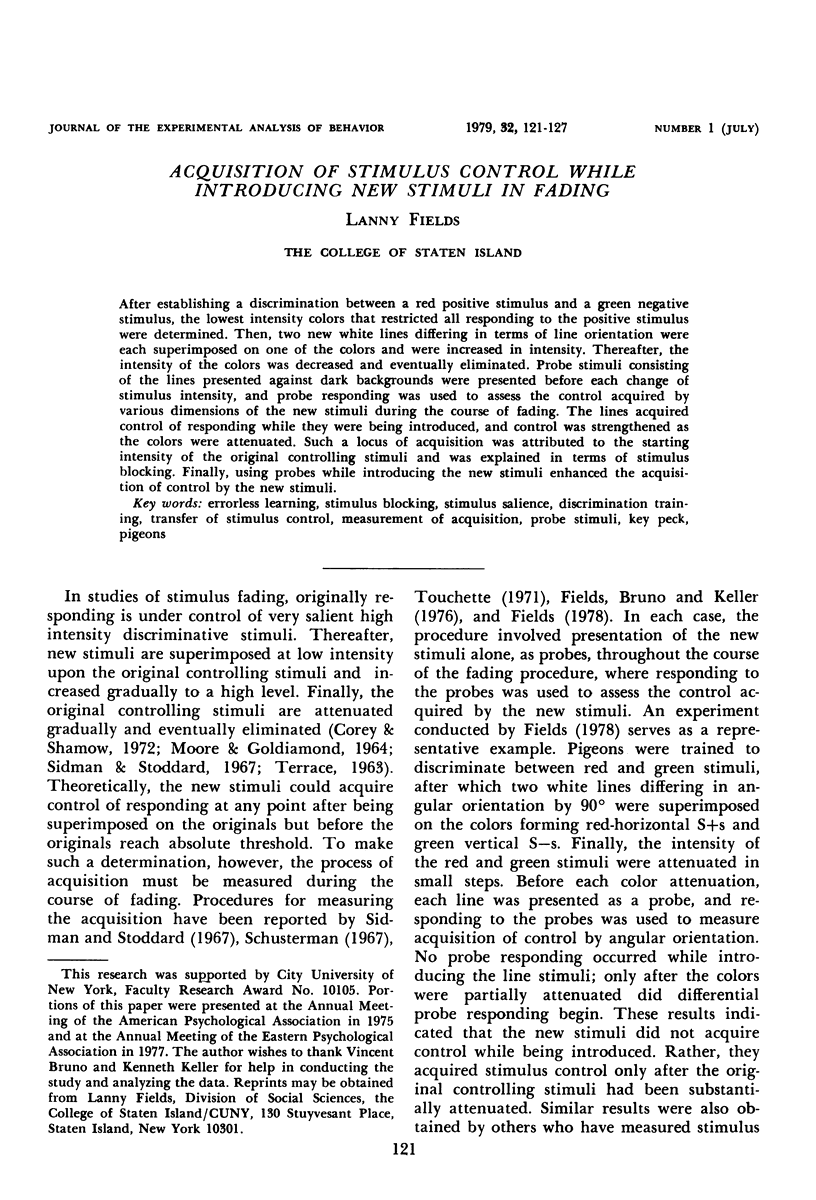

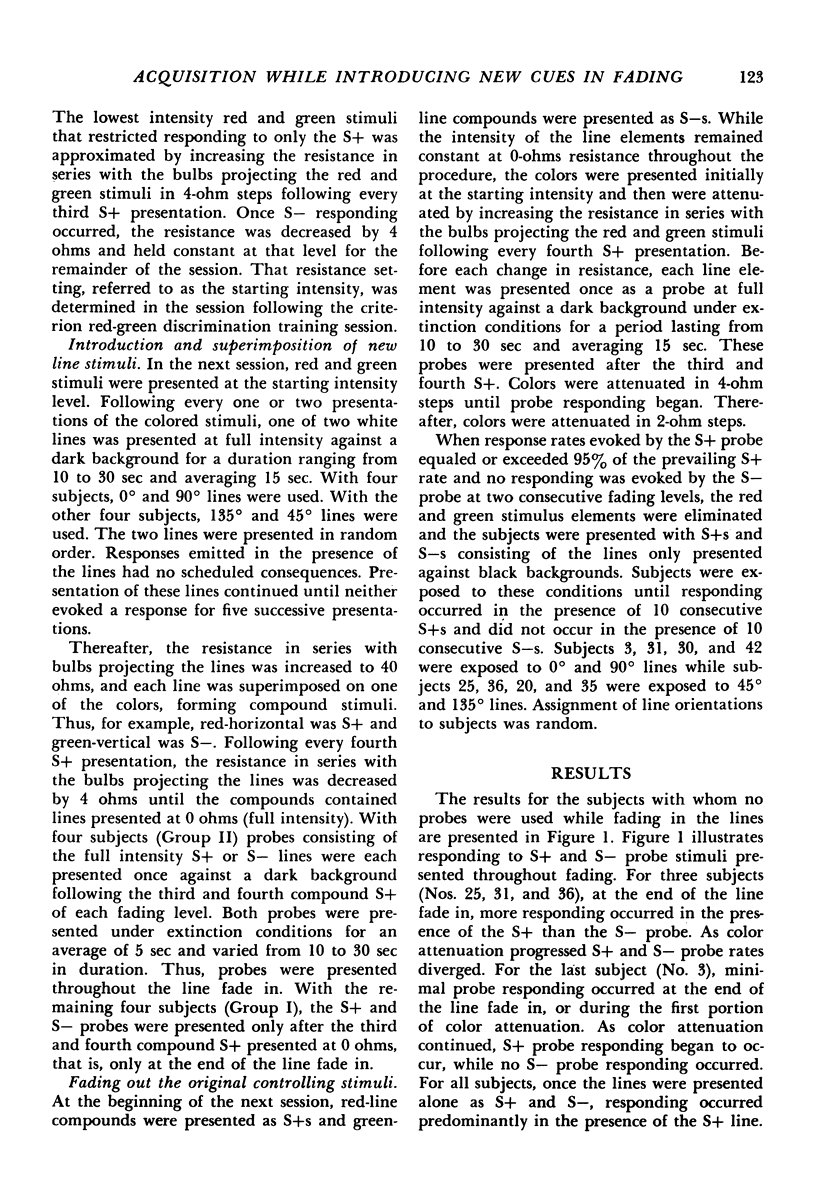
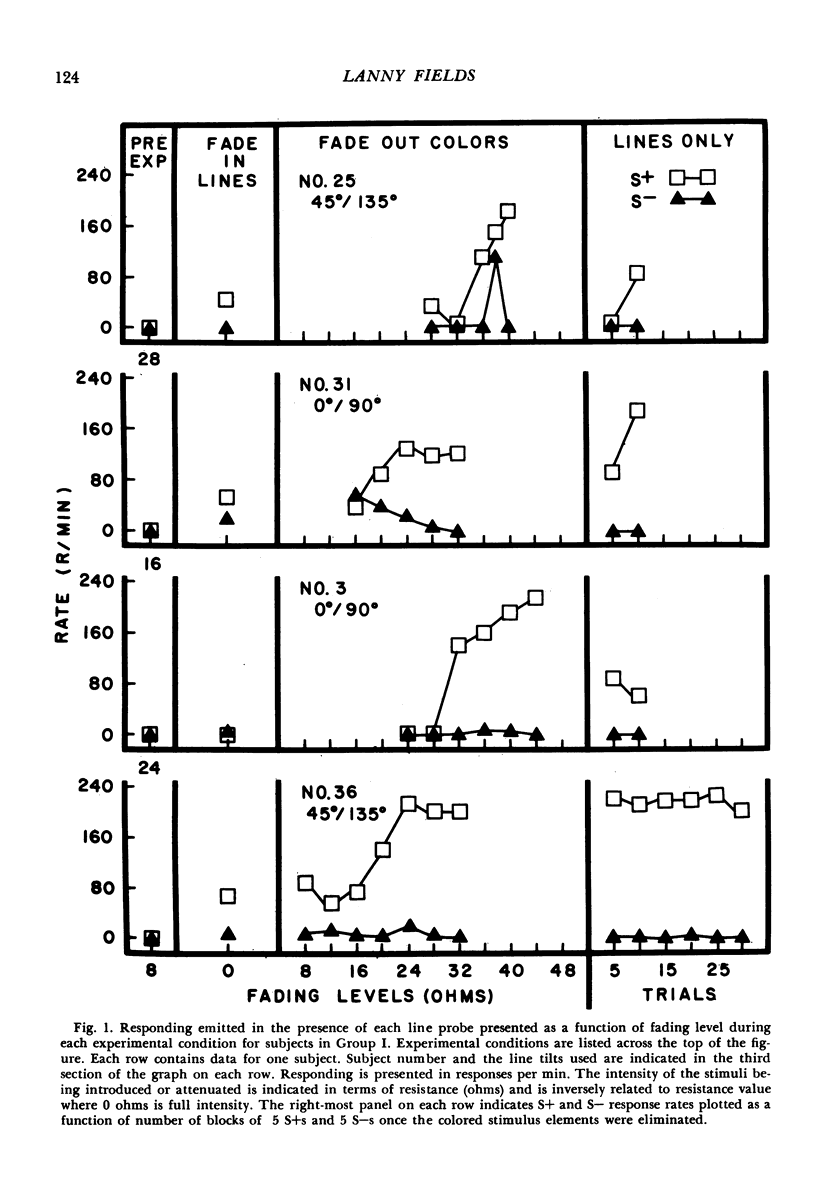
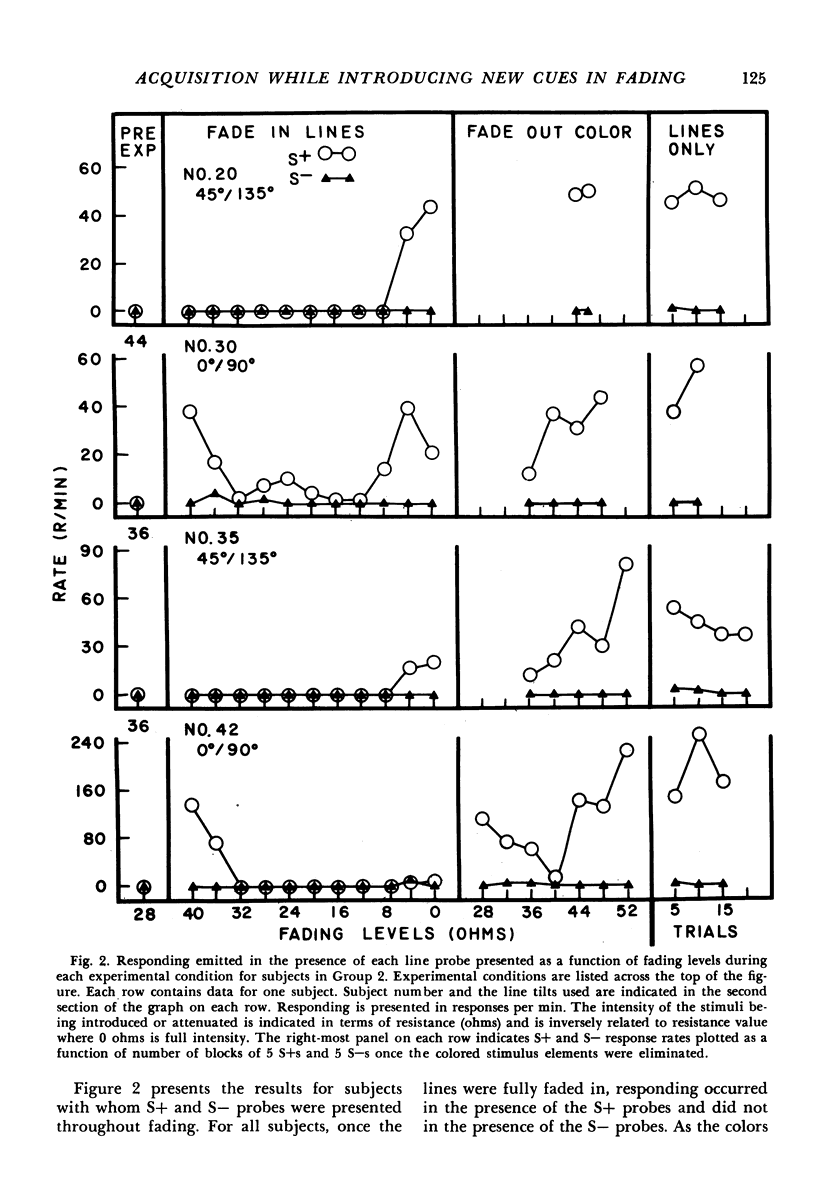

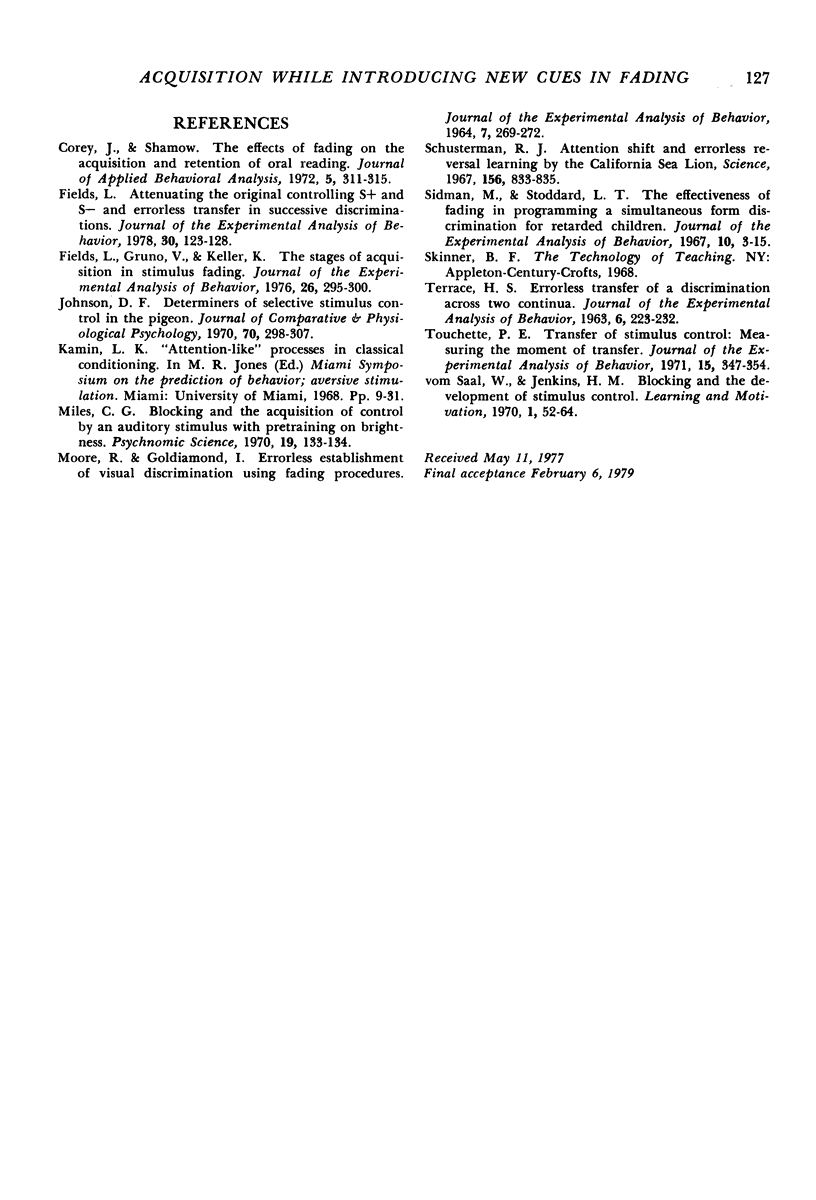
Selected References
These references are in PubMed. This may not be the complete list of references from this article.
- Corey J. R., Shamow J. The effects of fading on the acquisition and retention of oral reading. J Appl Behav Anal. 1972 Fall;5(3):311–315. doi: 10.1901/jaba.1972.5-311. [DOI] [PMC free article] [PubMed] [Google Scholar]
- Fields L., Bruno V., Keller K. The stages of acquisition in stimulus fading. J Exp Anal Behav. 1976 Sep;26(2):295–300. doi: 10.1901/jeab.1976.26-295. [DOI] [PMC free article] [PubMed] [Google Scholar]
- Fields L. Fading and errorless transfer in successive discriminations. J Exp Anal Behav. 1978 Jul;30(1):123–128. doi: 10.1901/jeab.1978.30-123. [DOI] [PMC free article] [PubMed] [Google Scholar]
- MOORE R., GOLDIAMOND I. ERRORLESS ESTABLISHMENT OF VISUAL DISCRIMINATION USING FADING PROCEDURES. J Exp Anal Behav. 1964 May;7:269–272. doi: 10.1901/jeab.1964.7-269. [DOI] [PMC free article] [PubMed] [Google Scholar]
- Schusterman R. J. Attention shift and errorless reversal learning by the California sea lion. Science. 1967 May 12;156(3776):833–835. doi: 10.1126/science.156.3776.833. [DOI] [PubMed] [Google Scholar]
- Sidman M., Stoddard L. T. The effectiveness of fading in programming a simultaneous form discrimination for retarded children. J Exp Anal Behav. 1967 Jan;10(1):3–15. doi: 10.1901/jeab.1967.10-3. [DOI] [PMC free article] [PubMed] [Google Scholar]
- TERRACE H. S. Errorless transfer of a discrimination across two continua. J Exp Anal Behav. 1963 Apr;6:223–232. doi: 10.1901/jeab.1963.6-223. [DOI] [PMC free article] [PubMed] [Google Scholar]
- Touchette P. E. Transfer of stimulus control: measuring the moment of transfer. J Exp Anal Behav. 1971 May;15(3):347–354. doi: 10.1901/jeab.1971.15-347. [DOI] [PMC free article] [PubMed] [Google Scholar]


